 by our College Data Analytics Team
by our College Data Analytics TeamWe've gathered data and other essential information about the program, such as the average salary of graduates, ethnicity of students, how many students graduated in recent times, and more. Also, learn how Tufts ranks among other schools offering degrees in conservation.
Go directly to any of the following sections:
Tufts was ranked #37 on College Factual's most recent list of the best schools for conservation majors. This puts the bachelor's program at the school solidly in the top 15% of all colleges and universities in the country. It is also ranked #3 in Massachusetts.
During the 2021-2022 academic year, Tufts University handed out 46 bachelor's degrees in natural resources conservation. This is an increase of 12% over the previous year when 41 degrees were handed out.
In 2022, 7 students received their master’s degree in conservation from Tufts. This makes it the #112 most popular school for conservation master’s degree candidates in the country.
The median salary of conservation students who receive their bachelor's degree at Tufts is $40,044. This is great news for graduates of the program, since this figure is higher than the national average of $34,020 for all conservation bachelor's degree recipients.
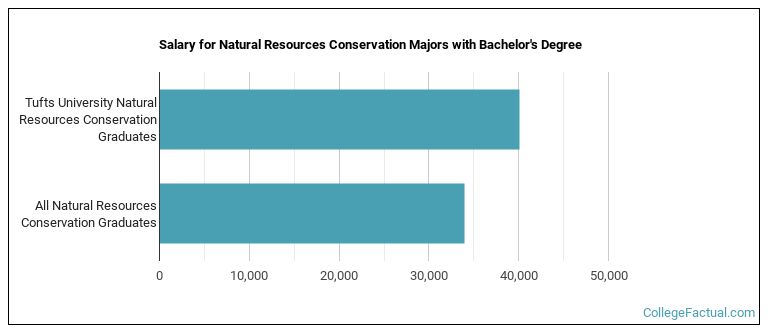
During the 2022-2023 academic year, part-time undergraduate students at Tufts paid an average of $2,212 per credit hour. No discount was available for in-state students. The average full-time tuition and fees for undergraduates are shown in the table below.
| In State | Out of State | |
|---|---|---|
| Tuition | $66,358 | $66,358 |
| Fees | $1,486 | $1,486 |
| Books and Supplies | $1,000 | $1,000 |
| On Campus Room and Board | $17,660 | $17,660 |
| On Campus Other Expenses | $1,796 | $1,796 |
Learn more about Tufts tuition and fees.
In the 2021-2022 academic year, 46 students earned a bachelor's degree in conservation from Tufts. About 74% of these graduates were women and the other 26% were men.
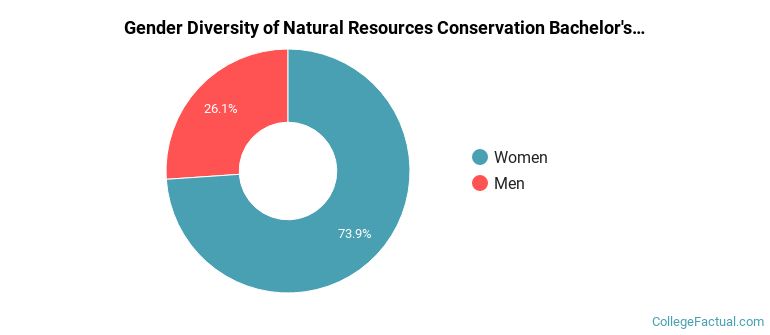
The majority of the students with this major are white. About 59% of 2022 graduates were in this category.
The following table and chart show the ethnic background for students who recently graduated from Tufts University with a bachelor's in conservation.
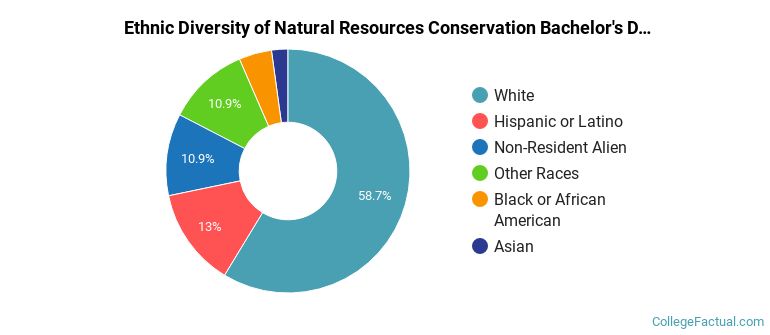
| Ethnic Background | Number of Students |
|---|---|
| Asian | 1 |
| Black or African American | 2 |
| Hispanic or Latino | 6 |
| White | 27 |
| Non-Resident Aliens | 5 |
| Other Races | 5 |
Online degrees for the Tufts conservation bachelor’s degree program are not available at this time. To see if the school offers distance learning options in other areas, visit the Tufts Online Learning page.
Of the 10 students who graduated with a Master’s in conservation from Tufts in 2022, 20% were men and 80% were women.
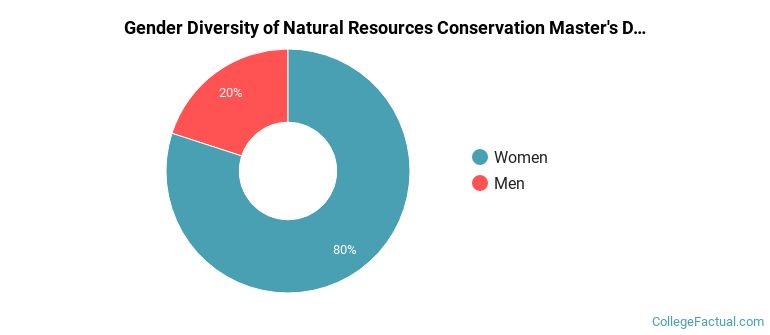
The following table and chart show the ethnic background for students who recently graduated from Tufts University with a master's in conservation.
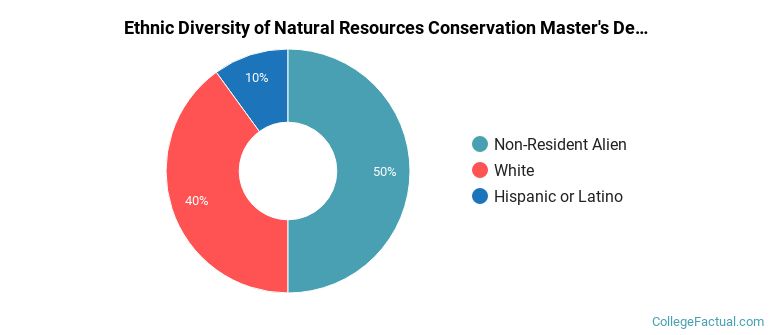
| Ethnic Background | Number of Students |
|---|---|
| Asian | 0 |
| Black or African American | 0 |
| Hispanic or Latino | 1 |
| White | 4 |
| Non-Resident Aliens | 5 |
| Other Races | 0 |
Take a look at the following statistics related to the make-up of the conservation majors at Tufts University.
More about our data sources and methodologies.